
Our Commitment to Quality
Our Techniques
The art of tatami making is a traditional craft.
We endeavor to preserve and pass on these techniques.
Every staff member is a top-level craftsman
Each staff member involved in the creation of tatami has achieved the highest rank available in Japan's National Tatami-Making Certification, making us one of Japan's foremost tatami companies. (Staff holding a first-rank certification: 6) Work experience, knowledge of tatami, and technical skill are all required in order to recieve this certification. Each staff member has the technical ability to work as a craftsman, and thinks of tatami-making not as a "job," but as a "vocation."
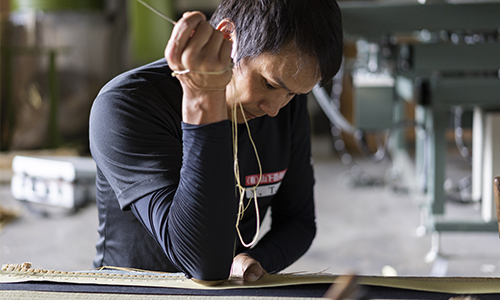
Tatami for each home and person
We believe that tatami will become a part of each customer's lifestyle. The same drive that motivates our staff to achieve their tatami-making certification pushes them to see tatami-making as more than mere manufacturing. While crafting your tatami they consider how to best suit it to each your individual lifestyle.
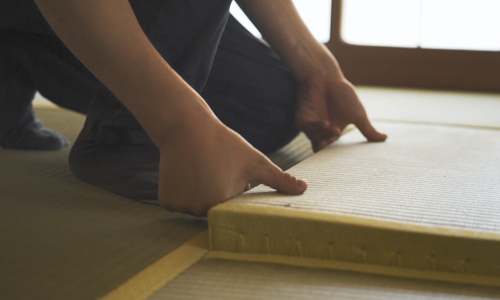
Preserving tradition and techniques for the next generation
We believe that it is our duty to pass on the traditional Japanese culture and craft of tatami to the next generation. The skills of tatami-making are important for being able to repair various cultural assets, but are being lost year by year, and there are many situations in which these skills can be applied to other things.
To ensure that these skills are passed on, our young staff gets hands-on practice both in-house and outside, proactively taking jobs such as repairing various cultural assets.
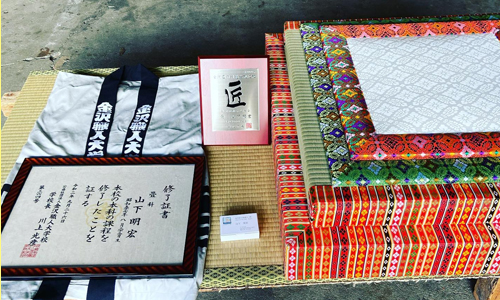
Carefully-Selected Materials
Our materials are not chosen to fill out a large selection or to increase the price.
We supply materials only after thoroughly understanding their properties and determining the optimal way to utilize them.
Tatami Facing
All our tatami facing made from Japan-grown rush undergoes a process called "netsusei," that is rarely done by other tatami makers. Freshly-cut rush is full of water and nutrients which give it a strong smell and vibrant color, as well as providing a breeding ground for mold and mildew. During netsusei, the rush is kept in climate-controlled storage for six months up to two years. This used to be common practice, but it can be said that the advent of large-scale production brought an end to the culture of netsusei. As the tatami facing is the portion that you most touch and see, we take the time to perform this extra step for the best results.
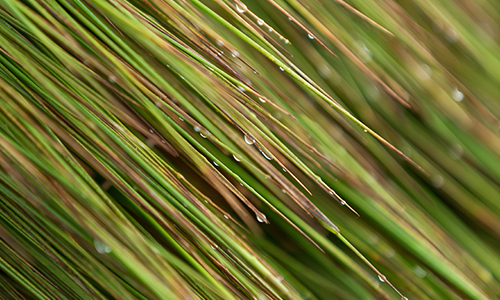
Tatami Cores
Nowadays, a wide variety of tatami cores - from natural straw to all-synthetic materials - is available. Let us help you find the one that is most suited to your individual needs and price range.
Additionally, we conduct training in-house about how to make tatami cores by hand from scratch; we put a lot of effort into understanding the contruction and qualities of each type of tatami core.
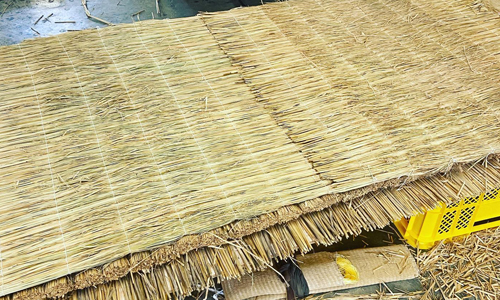
Tatami Borders
The tatami border has a great deal of impact on not only the tatami itself, but also the room as a whole; that's why we have a variety of border options to suit customers' tastes and cultures. It can be a lot of fun to try different patterns, widths, and materials to coordinate your tatami with your vision.
For borders with family crests or other precise patterns, we can ensure that it fits perfectly, without obscuring or cutting off parts of the pattern.
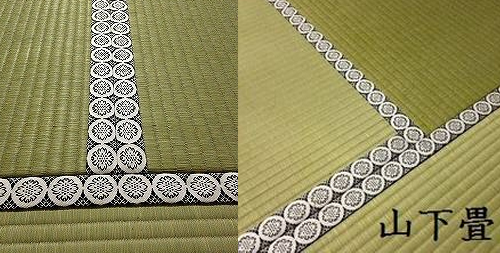
Our Promise
In order to ensure the satisfaction of every customer, we strive to accept any request for any situation.
All our tatami is made-to-order with the facing, core, border, and manufacturing method customizable for every order. We offer estimations through email, video call, in-person visitation, and more. Yamashita Tatami Shoten is confident that, no matter what the order, we have the skill and knowlege to rise to the challenge.
